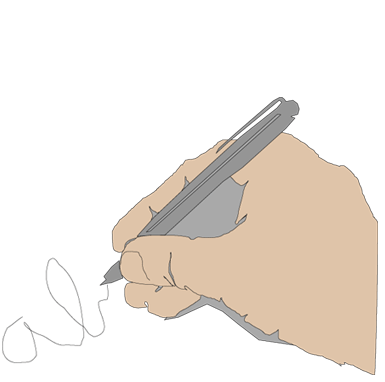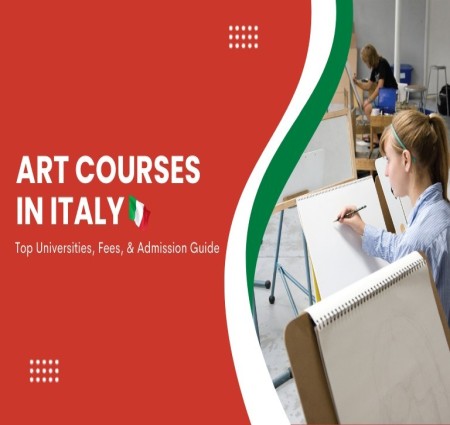Blog by yesitalyeducation | Digital Diary
" To Present local Business identity in front of global market"
" To Present local Business identity in front of global market"
 Digital Diary Submit Post
Digital Diary Submit Post
 Italy is one of the most inspiring destinations for students who want to build a career in arts. With a history that gave birth to Renaissance masters like Leonardo da Vinci and Michelangelo, the country continues to be a hub for creativity, design, and fine arts education. If you dream of pursuing an Art Course in Italy, you will not only gain knowledge but also experience a culture that breathes...
Read More
Italy is one of the most inspiring destinations for students who want to build a career in arts. With a history that gave birth to Renaissance masters like Leonardo da Vinci and Michelangelo, the country continues to be a hub for creativity, design, and fine arts education. If you dream of pursuing an Art Course in Italy, you will not only gain knowledge but also experience a culture that breathes...
Read More
Italy is one of the most inspiring destinations for students who want to build a career in arts. With a history that gave birth to Renaissance masters like Leonardo da Vinci and Michelangelo, the country continues to be a hub for creativity, design, and fine arts education. If you dream of pursuing an Art Course in Italy, you will not only gain knowledge but also experience a culture that breathes art in every corner.
In this guide, we will explain the step-by-step process of applying for art programs in Italy, scholarship opportunities, top cities, and useful tips for international students.
Choosing Italy for art education comes with many advantages:
World-class institutions – Italy hosts some of the best art and design schools in Europe.
Cultural heritage – Every city is like a living museum, from the Roman ruins in Rome to Renaissance art in Florence.
Diverse programs – From short workshops to master's degrees, there are programs for beginners and professionals.
Global recognition – An Italian art degree adds prestige to your career.
International exposure – Students from all over the world study art in Italy, giving you valuable cross-cultural experiences.
If you want to truly immerse yourself in art and creativity, Italy is one of the best places to study.
Before applying, it's important to know what type of program suits your goals. Some common options include:
Bachelor's Degree in Fine Arts (BFA) – Usually 3 years, focusing on fundamentals of painting, sculpture, drawing, and art history.
Master's in Fine Arts (MFA) – 1 to 2 years, suitable for students who already have a foundation in art.
Short-term and Diploma Courses – These can last from a few weeks to a year, perfect for students looking for focused learning.
Specialized Courses – Subjects like fashion design, interior design, photography, digital arts, or restoration of artworks.
Among these, many international students prefer art courses in Florence Italy, since the city is considered the "heart of Renaissance" and offers an unmatched environment to study classical as well as modern art.
Italy has several prestigious universities and academies that offer art programs. Some of the most popular include:
Accademia di Belle Arti di Firenze (Florence Academy of Fine Arts) – One of the oldest and most respected institutions for art.
Accademia di Belle Arti di Brera (Milan) – Known for modern and contemporary arts.
Istituto Europeo di Design (IED) – Offers a wide range of creative courses, including fashion and design.
Politecnico di Milano – Famous for design, architecture, and creative arts.
Venice Academy of Fine Arts – Located in a city known for its artistic traditions.
When choosing a university, consider:
Course curriculum and subjects.
Language of instruction (many programs are available in English).
Tuition fees and living expenses.
International recognition and placement opportunities.
To apply for an Art Course in Italy, you will need to submit certain documents. Requirements vary by institution, but generally include:
Application form – Filled online through the university's portal.
Portfolio – A collection of your best artwork, which plays a crucial role in selection.
Academic transcripts – Previous school or college certificates.
Statement of purpose (SOP) – A letter explaining why you want to study art in Italy.
Language proficiency proof – IELTS, TOEFL (for English programs) or Italian language certificates.
Passport and identification documents.
Make sure to prepare your portfolio carefully, as it often becomes the deciding factor in your admission.
Studying abroad can be expensive, but Italy provides several funding opportunities. Students often look for a full funded art course in Italy, which covers tuition fees, accommodation, and sometimes even living expenses. Some common options include:
Italian Government Scholarships – Available for international students at undergraduate and postgraduate levels.
DSU Scholarship – Provides financial aid based on family income and merit.
University-specific scholarships – Many institutions in Florence, Milan, and Rome offer their own funding options.
Erasmus+ Program – A European Union initiative that supports student exchange and funding.
Applying early increases your chances of securing these scholarships.
Once you receive your admission letter, the next step is to apply for a student visa (Type D Visa). Required documents generally include:
Admission letter from the Italian university.
Proof of sufficient funds or scholarship confirmation.
Valid passport.
Health insurance coverage.
Accommodation details in Italy.
After approval, you can make travel arrangements and prepare for your new academic journey.
Tuition fees – Public universities in Italy charge around €1,000 to €4,000 per year, while private art academies may charge higher.
Living costs – On average, students spend €700 to €1,200 per month on rent, food, and transport. Florence and Milan are slightly more expensive compared to smaller towns.
Additional costs – Art materials, exhibitions, and workshops may require extra budget.
Start early – Begin applications 6–12 months before the course start date.
Build a strong portfolio – Highlight creativity, originality, and technical skills.
Learn basic Italian – Even if your course is in English, daily communication becomes easier.
Stay updated on deadlines – Scholarship and admission deadlines are strict.
Explore part-time work – Students can work part-time in Italy to support expenses.
Studying art in Italy is not just about classes-it's about experiencing culture every day. Imagine walking past Renaissance masterpieces on your way to class in Florence, attending fashion exhibitions in Milan, or sketching in Venice's historic squares. The environment itself becomes your classroom.
Networking opportunities are also strong, as many art schools collaborate with museums, galleries, and creative industries. This gives students practical exposure and enhances career opportunities after graduation.
Applying for an Art Course in Italy can open doors to a world of creativity, global exposure, and career opportunities. From the historic charm of Florence to the modern art scene in Milan, Italy offers diverse choices for aspiring artists. By carefully choosing the right program, preparing your portfolio, and exploring scholarships like a full funded art course in Italy, you can make your dream come true.
With proper planning and dedication, Italy will not only shape your artistic skills but also give you an unforgettable life experience in the land of art, culture, and history.
Read Full Blog...